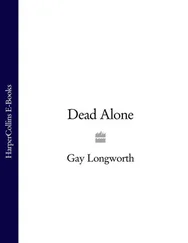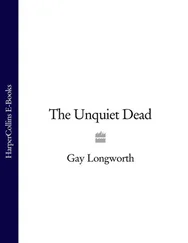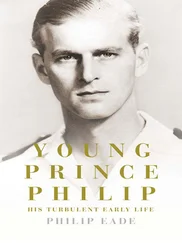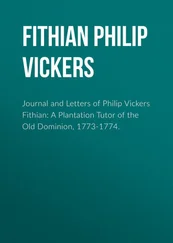From this point on, however, we should refer to the Mongols as Tatars, for, although the Tatars were not Mongols but Turkic-speaking tribes who followed Chingiz Khan and his successors, they came to represent Mongol power to the Russians. The Tatars sacked Riazan in 1237, Vladimir and Suzdal in 1238, and Pereiaslav and Chernigov in 1239. In 1240 they took Kiev itself. Then they put Russia’s princes to the rack, demanding their submission.
In 1243 Iaroslav of Vladimir submitted; in 1245 Prince Daniil Romanovich of Volhynia followed suit. Baty Khan confirmed both in office. When Grand Prince Mikhail Vsevolodovich of Kiev demurred, in 1246, they executed him. From then on the Khan was in control. The internecine fighting between the princes continued, but the Tatars learned to manage and manipulate it. They also enforced the taking of a census and the regular payment of considerable taxes. Beyond that they were content to govern at a distance, allowing the princes to administer their new subjects on their behalf. They only demanded that the princes visit their capital, Sarai on the Volga, to obtain confirmation of their appointments from the Khan, that they leave hostages as sureties for their good behaviour, and that they obey orders. Any infraction met with swift retribution, any protest with harsh reprisal. Otherwise the Russians were left alone.
Kievan Rus was destroyed; no Russian principality — not even Novgorod, which the Tatars had not reached — remained sovereign, and the Tatars were to make vicious punitive raids thereafter on various parts of the Russian land. The destruction and the loss of life was considerable; the sense of shame deep. Yet the impression nourished by Cold War historians that the Mongols ‘orientalized’ Russia is exaggerated. Apart from lending Russia a few institutions like the yam, or postal service (which is not peculiar to the Orient), and words for money, treasury and customs duties, their influence was chiefly psychological. Russia recovered demo-graphically, the economy eventually revived; the Church was virtually unaffected; and relations with Byzantium were not interrupted. 41And the seeds of the next, more successful, imperial Russia had already been sown.
THE POLITICAL SYSTEM of Kievan Rus had crumbled, never to be revived. The ultimate authority for the Russian lands was now the Tatar khan and his court at Sarai on the Volga. Yet over the course of the next two and a half centuries a new centre of authority was to emerge, more viable than the last — and in Moscow, a fortified settlement hardly heard of in the year 1200. It was the consequence of many causes, of both long-term trends and actions by individuals. To the extent that some recognizable elements of the old Russia were involved in creating the new entity it can be termed a reincarnation, but new factors also came into play, and the Tatars themselves unwittingly contributed towards it.
Some important trends noticeable in the late Kievan period continued. The drift of population northward, which had already given Vladimir preeminence among the principalities, resumed after an interval. 1So did the extension of agriculture, especially towards the east. This increased food production and hence human fertility. A rising birth rate evidently compensated for the increase of mortality due to war, and, although outbreaks of bubonic plague were to cause setbacks, the population soon resumed its healthy tendency to expansion. The territorial extent of the hunting-and-gathering economy also spread steadily eastwards and towards the northeast, bringing in more wealth in furs to sell. By the later 1300s it was also bringing more people of different ethnicity into the Russian orbit, including Maris and Mordvs, strengthening a colonial tendency which had begun long before when Russians and Riurik’s Viking band had first encountered Finnic fisher-folk in the neighbourhood of Novgorod. But it was Moscow, rather than Vladimir or Novgorod, that proved best able to capitalize on these changes. This was chiefly because of its advantageous location commanding the portages, and hence the commerce, that passed between rivers in the basin of the mid and upper Volga, between the smaller rivers Kostroma and Sokhma, the Sukhna and the Vaga. 2
The Russian princes, particularly of the north-central regions, benefited from these accretions of wealth, but so did the Tatars, who used the princes to collect taxes for them. Immediately following the conquest the Khan had sent in officials, called baskaks, to control each prince and each domain. The baskak ensured the payment of taxes and supervised a census, begun in 1257, to establish a systematic basis for revenue collection. The baskak also supervised the maintenance of order and ensured that the prince toed the correct political line. Quite soon, however, the Khan began to delegate some of these functions to co-operative Russians. So it was that Alexander Nevskii, hero of wars against the Teutonic Knights and Sweden, and grand prince of Vladimir from 1252 to 1263, came to impose the Tatars’ census on Novgorod, where he had begun his career. After a time all the baskak’s functions were transferred to the Grand Prince, and, as the Khan’s chief tax agent, the Grand Prince came to exercise a substantial advantage over rival rulers of the Russian lands. In this way a servile practice was transformed into a means of accreting power.
The imposition of Tatar power eventually contributed to a more effective Russian unity. It also stimulated institutional development, both directly (insofar as the princes’ courts borrowed some Tatar practices) and indirectly. The role of the Church in particular was much enhanced — not only as a source of spiritual solace and welfare, of literacy and political wisdom, but as an economic organizer. The Church became steadily wealthier as pious notables, merchants and landowners showered it with assets to ensure forgiveness for their sins and places in the world to come, and the assets were put to profitable use; and it developed a new dimension, helping to organize the territorial expansion into the interior which was already under way, and promoting further colonization. Its principal agency for this was the monastic movement, which was to make a considerable contribution to the territorial and economic development of the new Russia. So, by salvaging something from the ruins of Kievan Russia, and developing new agencies, Russians were eventually able to exploit more favourable ecological and demographic trends and to start rebuilding.
There were obstacles, of course. For a century and a half the Tatars continued to exploit Russia, creaming off its assets, and they regularly meddled in its affairs thereafter, diverting its energies. There were new outbreaks of fraternal strife among the Russian princes, most seriously between Tver and Moscow, and a new power, pagan Lithuania, emerged to the west and began to expand vigorously not only to the south but also eastward, threatening central Russia. Faced with these circumstances, Russians reacted in various ways: by migrating to avoid the challenges (though often confronting new ones in so doing), by exploiting the situations to their best advantage, but on occasion by confronting them. The chief actors in this bleak period were the princes.
They negotiated the best terms they could for themselves and their people with the Khan. They met him, his officials and each other at the periodic conferences he convened at Sarai, so that even their intrigues against each other were supervised. In personality the princes, though always represented as God-fearing, were mostly unattractive. They were arrogant and servile by turns according to the context in which they acted out their schizophrenic roles; cruel, and perforce sly. They could hardly have been much different, for theirs was a hard age and they faced cruel circumstances. Ivan I emerges as something of a hero among them, devious and grasping though he was, because his modest achievements proved to be a foundation stone of a new and successful political structure.
Читать дальше
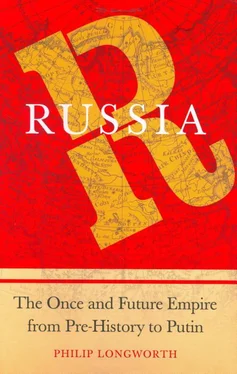




![Stephan Orth - Behind Putin's Curtain - Friendships and Misadventures Inside Russia [aka Couchsurfing in Russia]](/books/415210/stephan-orth-behind-putin-s-curtain-friendships-a-thumb.webp)

